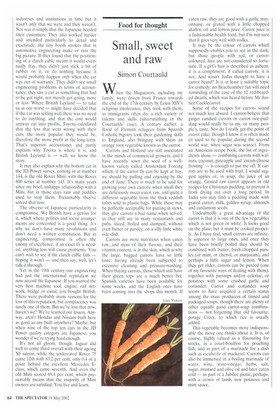Japanese on top
Alan Judd
Once again, the message seems clear: you want a good car, you buy Japanese. For the ninth successive year the JD Power customer satisfaction survey has put a Japanese car in pole position. One hundred thousand owners of two-year-old models were asked to rate their vehicles in eight categories which were resolved for final assessment into quality, appeal, ownership costs and service satisfaction. Twenty-eight thousand owners replied, with 144 models listed in
percentage order. If fewer that 50 owners of a particular model replied, it was excluded.
The overall winner was the Toyota Yaris supermini, with another Toyota (the small LCXUS, the IS200) second. They achieved 88.1 and 85.8 per cent customer satisfaction ratings. Toyota and their Lexus offshoot have thus been outright winners in six of the past nine years, with Subaru winning the other three. No wonder that Toyota's Landcruiser Amazon is reportedly the only vehicle trusted to cross the Gobi desert. How do they do it?
When Toyota started making cars in 1935 their first, the 1936 AA, was a stylish four-door saloon, upright but slightly more streamlined than most. It bore some resemblance to the Morris 10, During the second world war the quality of Japanese military engineering became distressingly evident. Post-war, they overcame an early reputation for producing cheap, tinny copies of established Western products to achieve a market penetration that, had Western consumers been allowed to buy what they wanted, would have destroyed most indigenous industries. They did destroy the British motorbike industry, which for too long scorned the idea that buyers might prefer electric to leg-breaking kick-starts, or might not regard pools of oil wherever they left their bikes as just a lovable old tradition.
Complacency threatens all successful industries and institutions in time but it wasn't only that we were and they weren't. Nor was it simply that the Japanese heeded their customers. They also worked harder and attended particularly to detail and exactitude. the tiny brush strokes that in automotive engineering make or mar the big picture. If they found that the positioning of a clutch cable meant it would eventually fray, they didn't just stick a bit of rubber on it, or do nothing because it would probably happen only when the car was out of warranty. They didn't see small engineering problems in terms of accountancy; they saw a car as something that had to be got right, not merely got going, more or less. Where British Leyland — to take us at our worst — might have decided that if the car was selling well there was no need to do anything, and that the cost would anyway eat into profits, Toyota calculated that the less that went wrong with their cars, the more popular they would be, therefore the more profit in the long term. That's superior accountancy and partly explains why Toyota is where it is, and British Leyland is — well, we know the story.
It may also explain why the bottom car in the JD Power survey, coming in at number 144, is the old Rover Mini, with the Rover 800 series at number 143. It's many years since my brief, unhappy relationship with a Mini, but in those days rain and puddles used to stop them. Presumably they've solved that now.
The obverse of Japanese particularity is compromise. We British have a genius for it, which where politics and social arrangements are concerned is a good thing. It's why we don't have many revolutions and don't need a written constitution. But in engineering, compromise is often the enemy of excellence; if an exact fit is needed, anything less will cause problems. You can't wait to see if the clutch cable fails hoping it won't — and then say, well, let's talk it through.
Yet in the 19th century our engineering had just the international reputation we now accord the Japanese. If you wanted the very best machine tool, engine, rail network, bridge or canal, you bought British. There were probably many reasons for the loss of this reputation, but complacency was surely one of them. But we've lost that now, haven't we? We've learned our lesson. Anyway, aren't Hondas and Nissans built here as good as any built anywhere? Maybe; but when nine of the top ten cars in the JD Power quality category are Japanese, you wonder if we're trying hard enough.
It's not all gloom, though. Jaguar did well to come third overall with their ageing XJ saloon, while the underrated Rover 75 came 12th with 83.2 per cent, only 0.4 of a point behind the excellent Mercedes Eclass, which came seventh. And even the old Mini scored 69.4 per cent, which presumably means that the majority of Mini owners are satisfied. You live and learn.















































































 Previous page
Previous page